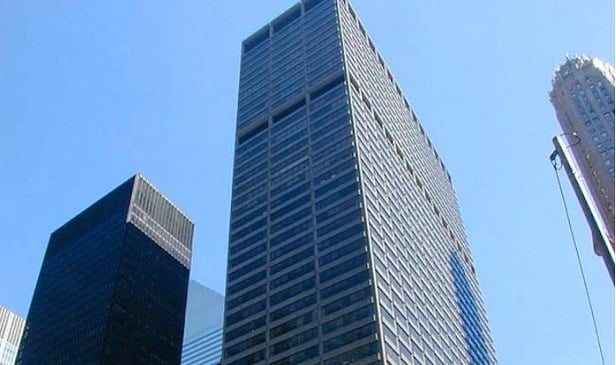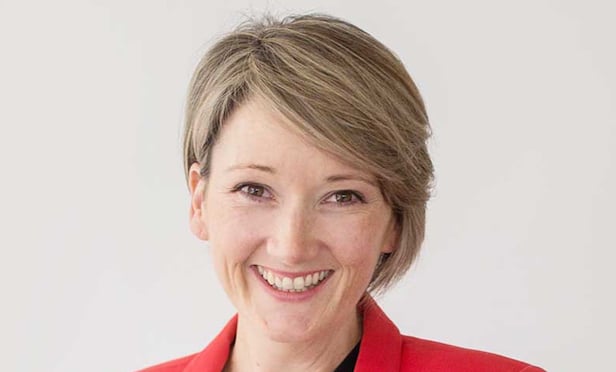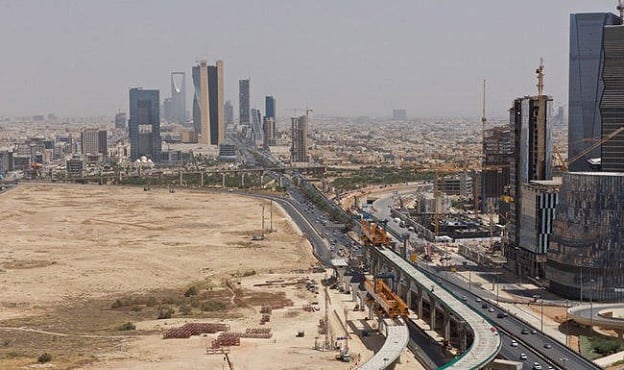James von Klemperer, principal of Kohn Pedersen Fox and primary architect of the Songdo IBD master plan, says the project's significance is more than just a pioneering technological feat. "It's the fact that this city is designed as an integrated set of functions that encompass everything in a very small area," he explains to GlobeSt.com.
Songdo IBD's unique composition has been accorded the first sustainable cities award by the Urban Land Institute and the Financial Times at a conference in London. Songdo IBD is a 70-30% joint venture project between Gale International of New York City and Posco Engineering & Construction of South Korea.
Among the aerotropolis' underpinnings is a complex system of water recycling to filter black water like sewage into gray water and underground cisterns to trap storm water run-off, all channeled into irrigation systems and non-potable uses for the 100-million-sf project's commercial buildings and green space. The crown jewel is a 100-acre "central park" with a low-maintenance, self-watering eco-system. "It looks so natural, but it's a highly engineered piece," von Klemperer says.
Von Klemperer adds that the technology has been used in building clusters, but not a development of the magnitude of the Songdo IBD. "This is the largest project in modern history since the emergence of sustainable technology," he says, pointing out that not even Canary Wharf, long considered the premier sustainable design, has a water recycling system like Songdo IBD.
Charles Reid, executive vice president of design and construction for Gale International, credits Korea with creating a public-private partnership that enables the landmark project to be a world-class showcase for sustainable design. The government has provided the technology for the centralized treatment of wastewater and transportation network, which includes a 7.4-mile bridge to Incheon International Airport and fuel-cell buses.
"It's a sustainable city for the 21st century, incorporating all the known technology and opening it up for future technology," Reid says. "It's a work in progress. You don't often get the opportunity to have 100 million sf of building area with a common set of sustainable elements running through them." Songdo IBD also is a pilot project of the USGBC's LEED-Neighborhood Development program. The IBD is touted as the first urban area in the world to "aspire" to LEED-ND certification for the entire city. There are two smaller projects in the LEED-ND program in China.
[IMGCAP(2)]To meet pedestrian-friendly criteria, von Klemperer says the government had to acquiesce on its traditional design for "super blocks" that stretch 800 feet to 1,000 feet and allow the developer to build blocks that will be 600 feet by 450 feet and broken down further with walkways and sea canals powered by wind turbines. "They're not tiny blocks, but they're a quarter of the size of what would have been built," he says. "We've had to transfer technology and design sensibilities so it becomes a hybrid." In comparison, a New York City block averages 200 feet, with cross-streets as the design element for introducing variety into the streetscape for pedestrians.
Songdo IBD's carbon footprint is still being calculated. The Korean government spent nearly $2 billion to reclaim a landfill to build the city and another $2 billion easily on additional infrastructure. Gale has hired YRG Sustainability Consultants of New York City to calculate the carbon footprint and develop an accurate metric for comparison. The finished product will then be put through paces by independent sources like the Natural Resources Defense Council and Sierra Club.
At its completion in 2015, Songdo IBD will house 65,000 residents and a 300,000 daytime population. And all Gale-built buildings will be LEED-certified, most in line for Silver and Gold stamps of approval. "The quality of life issues and environmental issues end up being so closely linked," says von Klemperer, whose firm has headquarters operations in New York City, London and Shanghai.
At the developer's side is the Korean Green Building Council, a relatively new organization that has emerged. Also, there has been a learning curve about LEED principles for Korean construction companies and third-party developers working in Songdo IBD.
The 33-million-sf phase one of the "Gateway to Northeast Asia" opens in August 2009, anchored by the 65-story Northeast Asia Trade Tower, a LEED Silver, and Convensia Convention Center. The Gale International/U-Life Northeast Asia Headquarters will be Korea's first LEED Platinum building.
The IBD build-out will total 45 million sf office, 30 million sf of residential space, 10 million sf of retail, five million sf of hospitality space and 10 million sf of public space. Building parapets will sport small wind turbines, with the city as an investment partner in renewal energy sources like regional wind farms. The IBD, which will be 40% green space, also will feature water taxis, extensive bike ways and electric-car rentals. Gale's technology partners include United Technologies Corp., Microsoft Corp. and General Electric.
"Green principles permeate Songdo's DNA so that it will be a model of the best of what is possible today as well as grow and adapt to the environmental challenges of the future," Stanley C. Gale, chairman and managing partner of the global firm, says in a press release. "Nature is powerful when you use it as a partner."
Songdo planners are creating a "test bed of green technologies," according to the release. Among the technology pursuits are using blast furnace slag as a replacement for cement in concrete production; using turbines to tap wave energy in the Yellow Sea; studying algal turf scrubbing to sequester carbon and create a source for biodiesel fuel production; and exploring ways to optimize the city's waste stream, possibly through bio-converters and bio-refineries.
Continue Reading for Free
Register and gain access to:
- Breaking commercial real estate news and analysis, on-site and via our newsletters and custom alerts
- Educational webcasts, white papers, and ebooks from industry thought leaders
- Critical coverage of the property casualty insurance and financial advisory markets on our other ALM sites, PropertyCasualty360 and ThinkAdvisor
Already have an account? Sign In Now
© 2024 ALM Global, LLC, All Rights Reserved. Request academic re-use from www.copyright.com. All other uses, submit a request to [email protected]. For more information visit Asset & Logo Licensing.









